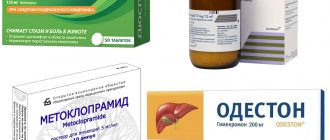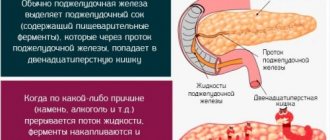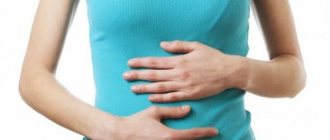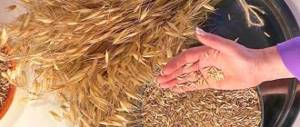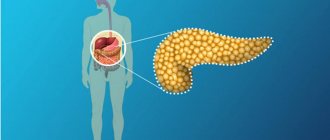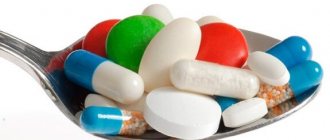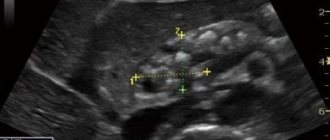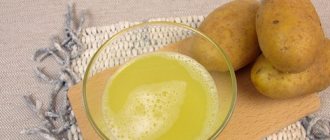Chronic parenchymal pancreatitis is a very common disease that is associated with inflammation of the pancreas. The disease proceeds in waves: remissions are replaced by stages of exacerbation, after which, even despite treatment, tissue scarring occurs. This in turn disrupts the patency of the ducts and causes changes in the functions of the pancreas, especially secretory and endocrine. The consequence of such conditions can be a disruption of insulin synthesis and the entire digestion process. As a result of a lack of vital substances, the work of other organs is disrupted, and all metabolic processes change.
To reduce the negative consequences of the disease, it is necessary to consider the clinical picture of the disease, the specifics of treatment and possible preventive measures.
Causes and forms of the disease
The main cause of parenchymal pancreatitis is inattention to one’s health, or rather an incorrect lifestyle: unbalanced irregular diet, smoking, stress, excessive consumption of fatty, spicy and salty foods, lack of vitamins and proteins in the diet, and more. Often the disease can be a consequence of other diseases. In such cases, it usually develops against the background of acute pancreatitis, stomach ulcers, alcoholism and some intestinal diseases.
Depending on the causes, the forms of the disease will be determined. Primary pancreatitis is distinguished when the disease was caused by external factors that have nothing to do with the pancreas. And secondary - develops against the background of diseases of organs close to the gland.
The main factors that can cause the development of parenchymal pancreatitis include:
- One of the main causes of the disease is excessive alcohol consumption (alcoholism is found in 60% of patients). This is alcoholic pancreatitis.
- Dysmetabolic pancreatitis develops against the background of metabolic disorders. The disease may be a consequence of cystic fibrosis or increased fat content in the blood plasma.
- A disease that occurs due to problems with the biliary system is called biliary-dependent or biliary pancreatitis. It usually develops against the background of hepatitis, cholecystitis, biliary dystonia, and cholelithiasis.
- The cause of infectious pancreatitis is viral infections. The disease occurs when an infection enters the pancreas by contact.
- Autoimmune pancreatitis develops when the immune system begins to perceive pancreatic cells as foreign, releasing antibodies to destroy them.
- You can develop parenchymal pancreatitis as a result of long-term use of drugs that have a toxic effect on pancreatic tissue. The use of such medications must be under the supervision of the attending physician.
- Violation of the outflow of secretions into the intestines.
- Heredity.
It should also be emphasized that about 30% of cases of the disease do not have a specific cause. Then they talk about the idiopathic form of parenchymal pancreatitis.
https://youtube.com/watch?v=75tumoQL9l4
About the causes of inflammation of the pancreas
Chronic pancreatitis does not occur out of nowhere. In many cases, the person himself becomes the culprit of the disease. Thus, the parenchyma often becomes inflamed in alcohol abusers and heavy smokers. Poor nutrition also harms the gland. The risk of developing pancreatitis is high among people who snack quickly and not always at the same time. And if the food is still fatty, salty and peppery, and poor in proteins and vitamins, then the likelihood that the pancreas will become inflamed increases significantly.
Many people who have been watching their diet since youth and do not have bad habits may also experience disturbances in the activity of the gland.
Inflammation of the parenchyma is caused by the following reasons:
- prolonged depression, stress;
- helminthic infestations;
- infectious diseases (influenza, viral hepatitis B and C, mumps);
- vascular diseases;
- long-term use of antibiotics;
- abdominal injuries.
Important information: Attack of pancreatitis: symptoms and what to do?⚕️
The appearance of pancreatitis is influenced by the condition of the abdominal organs, which are directly connected to the pancreas. For example, diseases of the duodenum (ulcer or duodenitis) and gastric surgery provoke inflammation of the parenchyma of the organ. And if a person has cholelithiasis, then in 90% of cases pancreatitis should be expected.
In some people, the duct of the exocrine and endocrine secretion gland may be narrowed from birth; over time, the defect will affect the condition of the organ. There is also such a thing as hereditary pancreatitis. If your direct relatives suffered from this disease, it may affect you too.
Symptoms and clinical picture of the disease
Symptoms of the disease are sometimes mild, especially during remission. More pronounced signs of the disease can be observed during exacerbation. Then the symptoms will depend on the patient’s condition and concomitant pathologies.
Among the main symptoms of the acute phase of the disease are:
- Painful sensations. Girdle pain may be observed (on the left under the rib). By character - aching, by strength - not very strong. Among the features we can highlight the fact that pain usually occurs against the background of overeating, eating heavy fatty foods or after alcohol abuse.
- Dyspeptic disorder. It manifests itself through unstable stools, when the patient alternates between constipation and diarrhea. In this case, undigested food particles can be seen in the patient’s stool. Nausea and vomiting are additional symptoms of the condition.
- Loss of body weight. Due to the decrease in the production of digestive enzymes, food cannot be digested properly, which means that nutrients from food are not absorbed. This causes weight loss. Another factor in weight loss is pain after a meal, due to which the patient tries to eat less often.
- Development of diabetes mellitus. The presence of such a symptom indicates extensive damage to the pancreas tissue (more than 80%). Diabetes develops because the production of insulin is disrupted, due to which cells cannot absorb glucose themselves.
If these symptoms are not observed in a person for the first time, but occur periodically, then we can speak of a chronic form of the disease.
In chronic parenchymal pancreatitis, the clinical picture may consist of the following symptoms:
- diarrhea (defecation occurs almost immediately after eating), while the smell of feces is sharp and fetid;
- frequent vomiting that does not bring relief;
- nausea in the morning;
- sudden weight loss;
- obstructive jaundice may develop;
- hemorrhagic skin rashes;
- increased sweating and salivation.
Among the features of chronic recurrent pancreatitis are the following:
- exacerbation of the condition is observed 2–3 times a year;
- exacerbation occurs in a mild form, especially when following a strict diet;
- Complications in patients are rare.
If you have symptoms, you should see a doctor to begin treatment if necessary.
Diet
In the first two to three days, eating any food is completely excluded. From the 4th day after the attack, it is allowed to eat unsalted food with a small amount of easily soluble carbohydrate compounds, ascorbic acid and B vitamins.
On the 8th day, it is allowed to introduce foods with vegetable and milk protein, as well as a small amount of fats and carbohydrates, into the diet. Food should be served in pureed form.
Exceptions from the diet should include the following ingredients:
- alcoholic and carbonated drinks,
- products with a high concentration of fats, salt and spicy seasonings,
- spices,
- sour soups,
- chocolates,
- coffee and tea drinks,
- fatty varieties of meat and fish,
- cabbage,
- all confectionery and bakery products.
You need to eat minimal portions at least 6 times a day.
Chronic pancreatitis occurs in almost every 10 people in the world. People over 40 years of age are most susceptible to this fairly common disease.
There are several main types of chronic pancreatitis, one of them is parenchymal (biliary-dependent). This type of pancreatitis has frequent relapses, approximately three times a year.
In our article we will look at how to treat chronic parenchymal pancreatitis, and what symptoms indicate the presence of the disease.
Causes of the disease
Parenchymal pancreatitis usually occurs due to a malfunction in the production of pancreatic enzymes. Most often, the following factors cause the development of the disease:
- Excessive physical activity to the point of exhaustion.
- Severe stressful situations followed by depression.
- Regular overeating of incompatible foods.
- Diseases that provoke the development of pancreatitis (gastritis, gastroduodenitis, cholelithiasis and others).
- Late detection or incorrect treatment of acute pancreatitis.
- Abuse of bad habits. In 80% of cases, the cause of the disease is drinking alcohol and smoking.
- Surgery or abdominal trauma.
With the parenchymal form of pancreatitis, exacerbations are quite often observed, which alternate with remission. During exacerbation of pancreatitis, the patient complains of the following symptoms:
- Significant weight loss. Due to frequent nausea, which does not bring relief, the patient has a complete loss of appetite. Prolonged fasting leads to weight loss. In addition, the patient feels fine on an empty stomach, so he limits his food intake on his own.
- Painful sensations. In chronic parenchymal pancreatitis, aching pain is observed, which is girdling in nature and is the main symptom of the disease. The pain may intensify after eating unhealthy foods (smoked meats, spicy seasonings, fatty foods).
- Increased blood sugar. A healthy pancreas produces insulin, which is necessary for the absorption of sugars. If the pancreas becomes inflamed, the process of insulin production is significantly inhibited, as a result of which blood sugar rises and diabetes develops.
- Intestinal disorders. An unpleasant symptom that worries many with this disease. The patient complains of watery stools with pieces of undigested food, constant nausea, and in some cases vomiting, which does not make him feel better.
When contacting a qualified gastroenterologist, based on the patient’s complaints and disturbing symptoms, the diagnosis is established almost immediately. For reliability, the following manipulations are prescribed:
- General blood and urine analysis. In the presence of the disease, the blood sugar level exceeds the norm several times. When there is inflammation in the body, bilirubin increases in the urine.
- Ultrasound examination of the pancreas allows you to visually assess the condition of the organ and its size.
- Usually two tests are enough to confirm the diagnosis. But in some cases it is necessary to use an additional diagnostic method - computed tomography.
After the diagnosis of parenchymal pancreatitis is confirmed, the doctor prescribes treatment depending on how you feel and the severity of the symptoms of the disease.
Treatment of the disease
The chronic stage of parenchymal pancreatitis cannot be completely cured. But if you follow some doctor’s recommendations and prescribed treatment, you can achieve long-term remission.
If you follow a certain diet, exacerbations occur very rarely. Many patients turn to a medical facility precisely during the period of exacerbation of biliary-dependent pancreatitis. Doctors strongly recommend treatment in a hospital.
Treatment is aimed at eliminating the following factors:
- First of all, it is necessary to get rid of the characteristic pain. Analgesics and antispasmodics (Baralgin, Nosh-pa, Drotaverine) are usually used for pain relief. If the pain is acute, painkillers are used intravenously.
- To normalize the acidity of gastric juice, antacid drugs (Omeprazole, Omez) are used.
- A course of drugs based on pancreatic enzymes (Festal, Creon).
- If chronic pancreatitis was not detected in time and has some complications, and drug treatment is powerless, doctors strongly recommend surgical intervention.
Diet principles
As a rule, in the first days of exacerbation of pancreatitis, the patient is advised to refuse food completely. Any foods and dishes should be prohibited for at least two days; if necessary, the doctor will extend the fasting period.
This is necessary so that the pancreas is not overloaded and remains in a calm state for some time. After a few days, the swelling of the pancreas subsides and the pain subsides. During the period of fasting with pancreatitis, nutrition occurs intravenously.
After fasting, you need to start eating carefully, following some principles:
- Ready meals should have a viscous consistency. It is advisable to limit yourself to jelly and a piece of jelly on the first day after fasting.
- Drinking should be complete, at least two liters per day.
- Among the drinks, preference should be given to traditional medicine: rosehip decoction, tea with lemon balm, decoction of pomegranate peels.
- You are allowed to eat a few crackers made from black bread.
Depending on the patient’s well-being, additional products are introduced on days 3 or 5.
- vegetable puree;
- slimy soups;
- porridge with viscous consistency;
- biscuits.
The basis of nutrition for pancreatitis should include the following products:
- white meat of chicken or rabbit;
- vegetables and fruits after heat treatment;
- dairy products;
- porridges from various cereals;
- non-fatty fish;
- chicken eggs.
During the remission stage, it is very important to follow fractional meals, that is, food should be consumed every three hours, and the size of portions, in turn, should be kept to a minimum. Maintain the temperature of prepared foods. The temperature should be at room temperature. It is allowed to cook food by steaming or stewing.
Traditional treatment
To prevent exacerbations of chronic pancreatitis from occurring for as long as possible, alternative treatment will be no less effective. Let's look at a few useful recipes:
- We peel several pieces of potatoes from the skin. Rub on a fine grater. Next, use gauze to strain the potato juice. Drink 14 glasses on an empty stomach and at night.
- Take a handful of oats, rinse under clean water and add a small amount of liquid, leave for a day. The next day, drain the water and dry the oats thoroughly. Grind to a powder. Add a handful of the resulting mass to boiling water. Boil for 10 minutes, then remove the drink from the stove. Bring to room temperature and consume half a glass three times a day.
- Place viburnum and rosehip berries in equal proportions in a saucepan and fill with cold water. From the moment of boiling, wait 30 minutes. Next, cover the drink with a lid and wait for it to cool completely. Drink the drink after meals.
At the first symptoms of pancreatitis, consult a doctor immediately. To prevent the disease from developing into a chronic disease, it is very important to follow a diet and follow the doctor’s recommendations.
Since the pancreas is directly related to digestion, diet plays a key role in chronic parenchymal pancreatitis. The amount of calories entering the body must strictly correspond to physical activity. More frequent meals are recommended (up to 6 times a day), with preference given to “light” foods.
To speed up recovery processes, the body must receive an increased amount of protein. The daily norm for a person suffering from inflammation of the pancreas should be 130 g, of which only one third can be of plant origin. Meat included in the diet should be lean.
Milk for chronic parenchymal pancreatitis is recommended as a basis for soups, porridges and jelly. Its use in its pure form should be strictly limited.
Raw and fried eggs are excluded from the diet. Only steamed protein omelettes are allowed for consumption. Adding eggs to other dishes as a dietary supplement is not prohibited.
Proteins of plant origin can be obtained along with buckwheat, rice, semolina, pasta and oatmeal. You can only eat yesterday's bread.
Fats included in the daily diet for parenchymal chronic pancreatitis should not exceed 80 g, of which only 20% can be of plant origin. Oil should be included in other dishes and in limited quantities. Margarine, pork, beef and cooking fats are excluded.
Carbohydrates during the diet are limited to a daily allowance of 350 g. This can be honey, sugar, jam and syrup. Steamed vegetable dishes are welcome. Fresh fruits should be ground before eating. It is recommended to drink compotes, especially those made from dried fruits.
In case of chronic parenchymal pancreatitis, it is necessary to strictly guard against overeating. The norm for the average person exposed to the disease is up to 2.5 kg (the amount of liquid drunk is also taken into account here). Meals should be divided into small portions and evenly distributed throughout the day.
Diagnosis and possible complications
The doctor will be able to diagnose pancreatitis based on symptoms after examining and interviewing the patient, but to confirm that the patient is dealing specifically with chronic parenchymal pancreatitis, it will be necessary to undergo an examination.
To carry out a diagnosis according to all the rules, you will need to undergo laboratory tests (general and biochemical blood tests, coprogram) and undergo instrumental examination (ultrasound, radiography, laparoscopy). Based on the results, it will be possible to establish an accurate diagnosis and begin treatment.
If the disease can be recognized at the initial stage and therapy can be started as early as possible, the effectiveness of treatment can be very high. If the patient has started the disease, then this is fraught with the development of various pathologies. The danger is that complications are difficult to treat and sometimes require surgery. Can also lead to death.
Advanced pancreatitis can cause the following complications:
- diabetes mellitus often develops, which is dangerous due to hypoglycemic crises;
- Various formations may occur that affect the functional tissues of the pancreas (cysts, abscesses, fistulas);
- one of the most dangerous options is malignant formations;
- gastritis, ulcers (of the stomach or duodenum), cholelithiasis, cholecystitis, chronic hepatitis and others may develop.
If the disease is not treated, the consequences for the patient can be very sad.
Chronic parenchymal biliary-dependent pancreatitis
Thanks to diagnostics, it is possible to identify such a type of inflammation of the parenchyma as chronic biliary-dependent pancreatitis. The concept “biliary” is a synonym for the word “bilious”. The disease develops in the pancreas if the bile ducts are damaged in the body. The main reason for the appearance of this type of pancreatitis is gallstone disease in a person. The gallbladder malfunctions due to stones present in it. When the pressure level in its ducts becomes higher than the pressure in the duct of a neighboring organ, bile is thrown into the pancreas and causes inflammation of the parenchyma.
Another cause of chronic biliary pancreatitis is disruption of the sphincter of Oddi, located inside the duodenum. The sphincter regulates the flow of bile and pancreatic juice into the intestine. If this muscle does not function properly, bile also enters the gland, which threatens it with pancreatitis. Symptoms of the disease are similar to parenchymal inflammation.
These include dyspepsia, weight loss, thirst, and biliary colic. With chronic parenchymal biliary-dependent pancreatitis, a person’s life may be in danger, since large stones can get stuck in the bile ducts and damage them. In order for the digestive system to function normally, doctors operate on the patient. Otherwise, secondary pancreatitis of this type can lead to abnormalities in the functioning of internal organs and death.
Important information: Diet for acute pancreatitis of the pancreas
Specifics of treatment
Since parenchymal pancreatitis is characterized by alternating exacerbation and remission, therapy during these periods will differ.
Treatment at the acute stage should be aimed at solving the following problems:
- reduce pain;
- relieve swelling of the gland;
- detoxify the body;
- replenish fluid and electrolyte composition of the blood;
- reduce enzyme activity;
- antibacterial therapy;
- symptomatic treatment;
- vitamin therapy.
During an exacerbation, the first thing doctors recommend is to relieve the pancreas as much as possible. Usually they prescribe a starvation diet (several days only on water) and cold on the stomach. Further nutrition should be very gentle: only boiled and stewed food. Drinking is allowed often, but in small portions. During remission, the diet continues to be followed, but the menu can be expanded (under the supervision of a doctor, taking into account blood and stool tests). Drug therapy is also selected by the doctor.
If the disease has become chronic, it will not be possible to be completely cured. The main thing that is necessary in this situation is to try to avoid exacerbations and prolong remission for as long as possible.
Maintaining balance and coherence in the functionality of all organs and systems in the human body is the key to good health. The human body is a single mechanism consisting of a chain of interacting parts, disruption of the functionality of one of which entails disruption of the functioning of the entire process. The pancreas is one of the most important organs of the digestive tract, which is also responsible for the health of the human endocrine system. One of the most common pathologies of this organ is pancreatitis. This disease is characterized as a sluggish lesion of the pancreas, which has an inflammatory nature, causing disruption of its functioning. A protracted form of recurrent chronic pancreatitis is called parenchymal.
Treatment
It should be noted right away that this pancreatitis cannot be completely eliminated. Why? When a patient experiences exacerbations, the pancreas tissue begins to deteriorate and cannot be completely restored. Therefore, the main treatment is aimed at prolonging remission, as well as preventing frequent exacerbations.
Chief gastroenterologist of the Russian Federation: “PANCREATITIS does not go away?! A simple treatment method has already healed hundreds of patients at home! To cure the pancreas forever you need...” Read more »
The patient needs to monitor his diet. With this pancreatitis, sharply limit food intake for about 1-2 days. As for liquids, drink them in any quantity. Eat 2 times a day; boiled porridge will be useful for this disease.
Important! Don't put a lot of sugar and salt in porridge. Otherwise, it will lead to aggravation and discomfort in the gastrointestinal tract.
In order to eliminate pain, painkillers are prescribed.
Also read: Chronic pancreatitis symptoms and treatment
For example: Analgin, Baralgin. If the pain is not relieved by these drugs, then doctors prescribe Novocain.
The patient is required to be prescribed replacement therapy. In treatment, you can use one of the drugs: Pancreatin, Creon, Panzinorm or Festal. These medications contain pancreatic enzymes.
Additional treatments
- Anti-enzyme drugs are prescribed, such as Gordox or Contrical.
- If diabetes mellitus occurs, Methyluracil is prescribed.
- To quickly restore the parenchyma of the gland, doctors prescribe Orotate or the drug Cobamamide.
The main essence of the treatment is to remove the part of the gland where the inflammatory process is present. Remember, if the first signs of the disease appear, you should immediately consult a doctor.
What is parenchymal pancreatitis
The parenchymal form of chronic pancreatitis is a pathological disease of the gastrointestinal tract system that affects the tissue structures of the pancreas. During the development of pathology, all directions of the functioning of this organ are disrupted, namely its exocrine, exocrine, endocrine and intrasecretory activities. In the absence of timely treatment, this pathology takes on a progressive form and significantly contributes to a decrease in the functionality of the affected organ.
Parenchymal pancreatitis is characterized by asymptomatic development over a long period of time, and a sluggish inflammatory process develops in the gland cavity, affecting the parenchyma, which leads to the progression of atrophic changes in the tissue.
The chronic form of this pathology is characterized by an alternating change in the nature of development with alternating periods of exacerbation and remission.
Causes of the disease
Such an insidious disease of the pancreas occurs and begins to progress under the influence of the following factors:
- abuse of alcoholic drinks of varying strength and quality;
- excessive consumption of foods with high levels of fat, spiciness and salt;
- living in an area with unfavorable environmental conditions;
- weakened immune defense system of the body;
- intoxication of the body;
- ulcerative lesions of the stomach;
- progressive stage of cholecystitis;
- snacking on the run and frequent consumption of fast foods;
- infestation by helminth representatives and many others. etc.
The disease can also occur against the background of frequent stressful situations and regular diseases of the upper respiratory tract, which are infectious in nature.
Types of disease
In modern medicine, there are several types of chronic pancreatitis, which have an ICD code of 10 – K86. Each type of this pathology has its own level of danger to general human health. The classification of pancreatic disease was created back in 1963 at the Marseille international conference, thanks to which they began to study in more detail not only acute varieties of pancreatic pathology, but also chronic ones. So, let's take a closer look at the main types of pancreatic pathology that pose the greatest level of danger to human health.
- Parenchymal biliary-dependent pancreatitis, developing over a long period of time due to congenital pathological disorders of the functionality of the biliary tract in the form of progression of cholecystitis, cholangitis, or cholelithiasis.
- Chronic parenchymal pancreatitis, occurring in most cases without the manifestation of symptomatic signs. Its insidiousness lies in the fact that if it is not treated in a timely manner, it contributes to the development of pathologies such as diabetes mellitus and tumor-like oncological neoplasms in the pancreatic cavity.
- Parenchymal recurrent pancreatitis, characterized by a clear alternation of periods of remission and exacerbation.
- A fibrous pancreatic process that develops as a complication of biliary or other types of parenchymal pancreatitis. It is detected only by ultrasound examination of the patient’s parenchyma.
General information about chronic pancreatitis
Over the past 30 years, the number of patients suffering from pancreatitis has more than doubled. This phenomenon is explained by alcohol abuse, cholelithiasis, a sedentary lifestyle, as well as regular intake of fatty and fried foods. Doctors note that pancreatitis has become “younger”: now the pathology is diagnosed on average at the age of 39 years, when previously the average age was 50 years.
The pancreas is an exocrine and intrasecretory organ. External secretion is the production of pancreatic juice, and internal secretion is the production of hormones.
Pancreatitis occurs when digestive enzymes in the gland itself are activated. As a result, the organ begins to “self-digest.” Chronic pancreatitis (CP) is one of the forms of the disease, which is characterized by dystrophic changes in the pancreas. With constant progression of the pathology, fibrosis, disappearance or shrinkage of acini (structural units of the pancreas), changes in the structure of the ducts, and the formation of stones in the parenchyma are observed.
According to ICD-10, CP of alcoholic etiology and others are distinguished. According to other classifications, there are biliary-dependent, parenchymal-fibrous and obstructive CP.
Unlike the acute, chronic form of the disease has a mild clinical picture or occurs together with concomitant diseases, for example, stomach and duodenal ulcers, chronic cholecystitis, biliary dyskinesia, etc.
Complaints of a patient suffering from chronic pancreatitis may be associated with:
- aching pain in the right hypochondrium;
- increased gas formation;
- attacks of nausea and a feeling of bitterness;
- dyspeptic disorder.
Often, due to violations of the rules of diet therapy, acute pancreatitis appears against the background of chronic pancreatitis, in which complete abstinence from food is indicated. This disease is incurable and therefore requires constant monitoring and medication.
Most experts distinguish two stages in the course of chronic pancreatitis/
Stage I (first 10 years) – alternating exacerbations and remission, dyspeptic disorders are not expressed, pain is felt in the epigastric area /
Stage II (more than 10 years) – pain subsides, dyspeptic disorder intensifies.
It is at the second stage that chronic pancreatitis develops with excretory insufficiency, which is characterized by significant damage to the pancreas.
Symptoms and signs of pathology
Like any other pathological process in the human body that has a chronic course, the parenchymal form of pancreatic lesions of the pancreas occurs in cyclical periods: moments of exacerbation are followed by remissions and in the reverse order.
During periods of remission, the patient feels complete comfort within himself, and the pathology does not continue to progress. But, over time, a period of exacerbation begins, accompanied by a whole complex of pathological signs. Symptoms of chronic parenchymal pancreatitis manifest themselves as follows:
- sharp painful sensations appear in the epigastric region with a characteristic shingles character;
- disorders of the dyspeptic organ system begin to develop, expressed by the formation of a feeling of nausea and the discharge of intense vomit, as well as the development of constipation or diarrhea;
- active loss of body weight against the background of impaired absorption of nutrients and fear of the occurrence of painful symptoms after eating, against which the patient loses appetite;
- a concomitant pathology begins to develop against the background of reduced insulin levels, called diabetes mellitus.
The chronic nature of the course of this disease during the initial examination of the patient will be indicated by the facts that the manifestation of the above symptomatic signs occurs periodically, after certain periods of time.
And, only the results of an ultrasound examination will indicate the development of the parenchymal form of pancreatic lesions of the pancreas.
During periods of exacerbation of pathology, excretory functional insufficiency of the gland may manifest itself with the following symptoms:
- heaviness in the abdominal area;
- lack of appetite;
- unpleasant smell of feces and the content of undigested food in them.
With exocrine pancreatic insufficiency, the patient progresses to the development of malabsorption against the background of a pathological disorder in the breakdown of food into necessary elements.
How does the disease manifest itself?
During the period of exacerbation of the disease, a person begins to experience pain. But unlike acute pancreatitis, in chronic pancreatitis they are not strong, but more of an aching, encircling nature. Their localization depends on which part of the gland is inflamed. If the parenchyma of the head of the organ is affected, the pain will be felt in the right hypochondrium and stomach. And if the body or tail is inflamed, the person will feel pain under the ribs on the left. Mostly pain occurs 1 hour after eating.
Chronic pancreatitis can occur with dyspeptic disorders. Because food is not digested properly due to inflammation, a person may experience nausea or vomiting. Common symptoms are diarrhea or constipation. With inflammation with exocrine insufficiency, the stool becomes foul-smelling.
In some cases, a person suffering from an exacerbation of pancreatitis loses weight.
This is affected by undigested food. It cannot be absorbed properly, and the body starves. The sick person himself is often afraid to eat a lot because of the pain, which also affects his weight.
It happens that a person, despite the pain, constantly wants to eat, he is tormented by thirst. These are symptoms of another disease - diabetes. It is often a companion to pancreatitis, since during inflammation the body produces little insulin due to a decrease in the intrasecretory properties of the gland.
If you notice these signs, you should immediately consult a doctor. He will conduct a study and, having made the correct diagnosis, prescribe effective treatment.
Important information: Symptoms of pancreatic necrosis and chances of survival
Methods for diagnosing the disease
The initial diagnosis is made on the basis of the patient’s complaints about the symptomatic signs that appear. To confirm the correctness of the diagnosis, in most cases, blood tests are prescribed for biochemistry, during which the level of alpha-amylase and c-reactive protein is assessed.
A general urine test is also prescribed, which also reveals an increased concentration of amylase and blood, which reveals an increased level of leukocytes and ESR.
To determine the extent of the lesion, an ultrasound of the entire peritoneal cavity is performed, and in more severe cases, computed tomography may be prescribed.
Treatment options
Treatment of chronic parenchymal pancreatitis can be carried out using conservative therapy during periods of exacerbation, folk remedies at the stage of stable remission and surgery, which requires emergency surgical intervention to perform resection of the affected area of the organ in case of serious complications of the disease.
Conservative treatment
During the period of exacerbation of the pathology, the patient is prescribed a 2-day fast, during which only alkaline drinking is allowed, and cold is applied to the abdominal area to ensure unloading of the affected organ. Then a strict regimen of dietary fractional nutrition is prescribed, in which a diet with table No. 5 must be followed.
To relieve attacks of pain, non-steroidal drugs are used, among which the most effective are:
Then it is necessary to compensate for the secretory insufficiency of the affected gland to normalize the processes of digestion and assimilation of food products. For this purpose, Mezim or Festal may be prescribed, 1-2 tablets with meals.
Treatment at home during remission
With the onset of stable remission, folk remedies become the optimal treatment. It is recommended to make decoctions and infusions, as well as brew teas from the following medicinal plants:
- field chamomile;
- immortelle;
- milk thistle;
- bitter wormwood;
- peppermint;
- dill inflorescences;
- sequences;
- calendula and many others. etc.
If, during treatment with folk remedies, symptoms begin to appear that worsen the patient’s general well-being, then taking folk medicines must be stopped and urgently consult a doctor.
In the first two to three days, eating any food is completely excluded. From the 4th day after the attack, it is allowed to eat unsalted food with a small amount of easily soluble carbohydrate compounds, ascorbic acid and B vitamins.
Some of the most useful products are: honey, natural fruit juices, cranberry-based fruit drink, berry decoctions and compote.
On the 8th day, it is allowed to introduce foods with vegetable and milk protein, as well as a small amount of fats and carbohydrates, into the diet. Food should be served in pureed form.
Exceptions from the diet should include the following ingredients:
- alcoholic and carbonated drinks;
- products with a high concentration of fats, salt and hot seasonings;
- spices;
- sour soups;
- chocolates;
- coffee and tea drinks;
- fatty varieties of meat and fish;
- cabbage;
- all confectionery and bakery products.
You need to eat minimal portions at least 6 times a day.
Therapeutic methods
Treatment of parenchymal chronic pancreatitis is a complex and personal undertaking. The course of the disease in each patient has its own characteristics. That is, there is no single treatment regimen. In addition to medications, a diet and giving up bad habits are extremely important.
As for medications, for such a disease the doctor may prescribe different pharmacological groups:
- analgesics;
- smooth muscle antispasmodics;
- enzymatic agents;
- regulators of peristalsis and antiemetic medications;
- antibiotics (if necessary);
- multivitamins.
Surgical intervention is advisable in the presence of stones in the bile ducts that have caused biliary pathology. Or, it is necessary in a situation where conservative therapy is ineffective.
Having parenchymal pancreatitis, you should pay attention to nutrition. During an exacerbation, fasting is indicated for 2-3 days. During this time, you are allowed to drink only alkaline non-carbonated mineral water.
A patient with chronic parenchymal pancreatitis should follow diet 5. It implies a menu containing more protein foods and excluding fats and quickly digestible carbohydrates. The use of vegetable oil is allowed, but not more than 60 g. More details about the useful list of products are written at the link.
When parenchymal pancreatitis is diagnosed, treatment with folk remedies for such a pathology is rather auxiliary. The use of medicinal herbs that have a choleretic effect is strictly contraindicated in some forms of pancreatitis.
Prevention
To prevent the development of such a serious pathological disease, it is recommended to maintain a healthy lifestyle and maintain a proper diet, completely stop drinking alcohol and smoking, timely elimination of infectious pathologies, and regular exposure to fresh air.
The development of pancreatic pathology must be promptly stopped and eliminated, otherwise decomposition and death of the tissue structures of the gland may occur, which will lead to serious consequences and complications of the disease, including death.
The health of the human body is an invaluable gift of nature, which must be taken care of and protected, therefore, if any disorders occur and general well-being deteriorates, you should not delay, but simply immediately consult a doctor and receive timely help, without leading to the development of serious diseases.
Inflammation of the pancreas can be acute or chronic. In the first case, the cells are destroyed under the influence of a strong irritant (a violent feast, a toxic drug, migration of stones from the gall bladder). In this case, the part of the organ that has undergone the maximum impact suffers. Chronic parenchymal pancreatitis acts slowly, but the entire tissue is evenly affected. With this process, the gland cells are exposed to low doses of toxic substances. Let's talk more about this disease in our article.
Causes of damage to the organ parenchyma
The biggest problem of modern society, which often leads to pancreatitis, is poor nutrition. Lack of breakfast, a hearty dinner and daytime fast food snacks lead to the fact that the gland works in stress mode. This significantly weakens the parenchymal tissue and leads to low-grade inflammation.
Pancreas also does not like foods that are too fatty or too sweet. In the first case, it has to synthesize an excess amount of lipase. In the second situation, a lot of insulin is released into the blood, which helps to utilize glucose molecules. If such food enters the body frequently, the secretory cells become depleted and begin to die.
Toxic substances have a detrimental effect on the pancreas: alcohol, some medications, preservatives and food dyes. Small amounts of these substances entering the body daily make the body's immune system susceptible to external factors. Also, under their influence, mutations and the growth of oncology are possible.
The pancreatic parenchyma can be affected by viral and bacterial pathogens. Pancreas infections usually occur in childhood. Cell destruction can be caused by viruses (mumps, infectious hepatitis), bacteria (salmonella, brucella), protozoa (giardia), parasites (ascariasis).
Complications
Parenchymal pancreatitis rarely occurs without complications. Improper production of enzymes, poor digestion of food and blockage of the bile ducts lead to a total disruption of the digestive process. The pathological process begins to gradually cover the entire parenchyma, leading to irreversible changes in the pancreas and spreading to neighboring internal organs.
Cancer
In the absence of timely treatment, pancreatitis leads to the formation of an oncological neoplasm in the tissues of the organ.
In the absence of metastases to neighboring organs, the disease is treated by removing the pancreas.
In the absence of metastases to neighboring organs, the disease is treated by removing the pancreas and administering chemotherapy. If metastases have already started, therapy is prescribed to stop their further spread.
Inflammation of the parenchyma
When inflammation spreads throughout the parenchyma, pancreatitis leads to complete atrophy of the pancreas. The organ stops working. The treatment method is removal of the gland.
Diabetes
The most common complication that occurs quite quickly. The reason is a violation of the digestion process of food, dysfunction of the bile ducts. Treatment: medication, aimed at normalizing and maintaining blood glucose levels, strict adherence to diet.
Diabetes mellitus is the most common complication that occurs quite quickly.
Gastric erosion
Pancreatitis provokes the reflux of pancreatic enzymes into the stomach, which leads to irritation of its mucous membrane and the formation of erosion in it. The disease is characterized by a painful symptomatic picture. Treatment: symptomatic; therapy is required to normalize the functioning of the pancreas.
Clinical picture of the disease
Chronic pancreatitis of the parenchyma develops over years. In this case, the symptoms of the disease increase slowly. If the pathogenic effect is not eliminated in time, the inflammatory process will take over the entire tissue of the organ. As a result, symptoms of enzyme and hormonal deficiency increase.
- a dull aching pain appears in the left hypochondrium;
- after eating, the patient suffers from belching and bitterness in the mouth;
- spicy and fatty foods provoke nausea and even vomiting;
- after eating, the patient complains of bloating and flatulence;
- the stool is unstable, constipation may alternate with diarrhea;
- the patient gradually loses weight;
- impurities of fat and undigested dietary fiber are often found in feces;
- Symptoms of vitamin deficiency appear (brittle hair and nails, poor skin).
Destruction of the cells of the islets of Langerhans leads to insulin deficiency - diabetes mellitus. The patient is worried about dizziness, fatigue, constant thirst and hunger. Some patients complain of dry skin. Glucose, which is not utilized in the body, destroys the walls of blood vessels. Patients may fall into a coma before doctors detect the disease. Fainting, which indicates an increase in sugar, is also dangerous. During an attack, a person may be seriously injured or involved in an accident.
Acute pancreatitis with parenchymal involvement is rare. Symptoms develop over several days. Pain and indigestion come first. But usually such pancreatitis occurs against the background of infections or diseases with similar symptoms. Similar signs blur the clinical picture of the disease and lead to late diagnosis.
Symptoms and clinical manifestations
The main symptoms appear during exacerbation and subside during remission.
- Pain occurs after breaking the diet or performing physical activity. They are paroxysmal in nature. Localized in the epigastric region, radiating to both sides and to the back. 1/5 of patients develop a painless form.
- Weight loss is initially protective; the patient after an acute illness is afraid to expand his diet and eats very little. Then weight loss occurs due to increased excretion of essential nutrients in feces through the intestines.
- Diarrhea - frequent bowel movements are also called “steatorrhea” due to the increased excretion of fats and proteins in the feces.
- The manifestation of diabetes mellitus is observed when 80% of the pancreas volume is affected.
Clinical course options:
- subacute chronic pancreatitis (edematous-interstitial) - occurs immediately after acute, lasts more than six months, is characterized by frequent pain, nausea and vomiting, up to 40% of cases give complications;
- recurrent (parenchymal) chronic pancreatitis is the most common form (80% of patients), exacerbations occur several times a year, but is not severe, improvement occurs quickly after applying a strict diet, complications are observed relatively rarely;
- fibrous-sclerotic - accompanied by persistent pain and dyspepsia, these are the main patients of the gastrological departments of the hospital;
- cystic - in addition to typical pain, it gives pronounced changes in the enzyme composition of the blood, palpation in some cases reveals a soft formation, more often than other forms it gives complications, the prognosis is unfavorable;
- chronic pseudotumorous pancreatitis - prolonged pain, significant weight loss, palpation of a compacted formation in the epigastrium allows one to suspect a tumor.
During the course there are stages:
- initial chronic pancreatitis - lasts up to five years, characterized by frequent relapses and pain;
- chronic pancreatitis with pronounced clinical manifestations - lasts 7–10 years and is accompanied by all the described symptoms, signs of exocrine insufficiency, secondary diabetes, depending on the formation of the course;
- chronic pancreatitis inflammation subsides - patients adapt to the diet, clinical improvement occurs, but complications develop in 1/3 of patients.
Laboratory diagnosis of parenchymal pancreatitis
Chronic pancreatitis is difficult to diagnose. General and biochemical analyzes do not show specific changes. During the period of remission, leukocyte counts remain within normal limits, there is no shift in the leukocyte formula. Biochemical analysis reveals changes in liver enzymes and the body's inflammatory response to inflammation.
Chronic organ dysfunction can be detected by performing a stool test. The coprogram of such patients contains particles of fat, undigested fibers and starch inclusions.
An ultrasound examination of this organ is also performed. The echogenicity of the pancreatic parenchyma is increased. The change in the ultrasound signal occurs due to the replacement of soft glandular tissue with denser connective tissue. This structure has no function other than maintaining the framework of the organ. Also, a diagnostic specialist may note in the conclusion: moderate diffuse changes in the organ.
Many people do not know what such an examination by an ultrasound doctor means. What are diffuse changes in the pancreatic parenchyma? These complex words indicate that the disease affects the entire tissue of the organ, without selecting any specific areas. We most often see this picture in chronic parenchymal pancreatitis. The specialist also notes how pronounced the problems in the organ are. Moderate changes indicate the onset of the disease. Pronounced diffuse tissue infiltration will indicate the development of the disease.
More complex diagnostics (CT, MRI) are required only in special cases.
Treatment of chronic parenchymal pancreatitis consists of normalizing the diet and giving up bad habits. In some cases, it is necessary to replace certain medications, change place of work or residence. It is known that in rural areas the percentage of inflammation of the pancreatic parenchyma is much lower.
Nutrition plays a major role. Avoiding fatty, fried, smoked and spicy foods will make life much easier for your pancreas. This, unfortunately, does not mean that diffuse changes in the parenchyma will go away. But the process of tissue destruction will not move to a new stage.
Diet is also important. Pancreas copes better with small portions (150-200 ml). Food is served only warm. Cold closes the sphincter of Oddi, and heat damages the gastric mucosa. It is also necessary to take care of the availability of nutrients. During the acute period, it is better to grind food in a blender. Enzymes will be able to completely penetrate such a food bolus. This means that the body will receive more nutrients from food.
The parenchyma of the liver and pancreas is often affected by drugs. The leaders of damage in these organs are various hormones. Corticosteroids, estrogen-containing contraceptives, and ACTH have a toxic effect on the liver and pancreas. Antibiotics such as rifampicin, tetracycline, and sulfonamides also have a negative effect on these organs. Painkillers - salicylic acid, indomethacin, paracetamol - destroy not only the pancreas, but also the gastric mucosa. If the patient is constantly taking these drugs and he has signs of diffuse changes in the pancreatic parenchyma, then treatment should be discontinued. If possible, drugs are replaced with safe analogues or discontinued altogether.
Standard therapy for pancreatitis is the use of substances that reduce gastric secretion (Omez, Hefal). If exocrine insufficiency is detected, the doctor selects the dose of enzymes. Unfortunately, there is no way to restore organ tissue. Changes in the pancreatic parenchyma will remain forever.
Pancreatitis is an inflammation of the pancreas, most often caused by malnutrition. It is quite common in both men and women. Based on the symptoms, there are several types of disease, one of which is parenchymal pancreatitis, also called recurrent. In our article we will talk about its causes, reveal the symptoms of the disease and how treatment occurs.
Causes and types of exocrine insufficiency
The disease is classified depending on factors, size, and the presence of other disorders in the body. There are two types of exocrine insufficiency:
- acquired - occurs in people who have chronic pancreatitis syndrome;
- congenital - specific anomalies are transmitted according to the genetic code, which block the normal production of nutritional enzymes.
Exocrine insufficiency of pancreatic disease has its own qualifications, depending on the condition and its spread to neighboring organs of the system. A secondary form of the disease is identified, in which enzyme elements are produced. But the peculiarity of the disease is not the synthesis of substances in the small intestine and duodenum. An inactivation process occurs in the pancreas, which complicates the health condition. There is also such a classification as the aerphic form of the disease, in which disorders occur in the pancreas itself, provoked by improper synthesis of enzyme substances.
We also recommend viewing: Tumor in the pancreas: classification, symptoms and treatment
The causes of the disease are different factors, but they are divided according to the form of the disease. The primary classification group of pathology arises from chronic pancreatin. In addition, the disorder can be caused by:
- pancreatic agenesis;
- hypoplasia;
- Johanson-Blizzard or Shwachman diseases;
- genetic predisposition to enzyme deficiency;
- consequences of surgery;
- exocrine deficiency;
- severe obesity, which provokes changes in the cellular components of the pancreas;
- malignant and benign neoplasms in the pancreas;
- cystic fibrosis - this disease is congenital in nature, in which disturbances occur in the activity of secretion, and is accompanied by improper functioning of the organ.
The causes of disorders of the exocrine activity of the gland organ can be atrophy and fibrosis. Such symptoms are consequences of disorders in the body. The most common of them are:
- stones appear in the ducts of the pankyriatic system;
- pancreatic necrosis - the syndrome manifests itself with the complete or partial death of pancreatic cells;
- diabetes mellitus - the diagnosis is a severe complication of pancreatitis and most often has a second form of development;
- cirrhosis of a pancreatic nature;
- hemosiderosis - in the soft tissues of hemosiderin, an accumulation of iron pigment occurs, which is found in large quantities in the organ;
- poor nutrition, uncontrolled consumption of foods that destroy the walls of the pancreas;
- atherosclerosis;
- alcoholic, obstructive, calculous pancreatitis.
The secondary type of enzyme deficiency is formed due to disorders that occur in the small intestine of the digestive tract. Main pathologies:
- side effects after surgery on the digestive system;
- protein deficiency;
- improper functioning of the hepatobiliary subsystem;
- enterokinase enzymes do not leave the body in full or completely incorrectly;
- excretory insufficiency;
- damage to the mucous membrane;
- gastrinoma is an active neoplasm.
In the pancreas, there are also absolute and relative forms of the disease. With a decrease in the size of the parenchyma in the pancreas, absolute enzymatic deficiency is formed, which manifests itself with poor production of bicarbonates and enzymes. In medical practice, this form is extremely rare in patients with exocrine insufficiency. Most often, this type of disease is diagnosed in children who have congenital anomalies of the structure of the body, for example, with incomplete formation of the gland ducts, hereditary pancreatitis, hypoplasia of the pancreas.
Important! It is quite rare for adult patients to experience such a disorder as an acquired disease. This is possible as a result of self-treatment of pancreatitis of various types.
The relative form manifests itself along with the disease itself. That is, it cannot exist separately. It is caused by poor passage into the lumen of the intestinal tract (the pancreatic substance does not enter its thin walls), which can be caused by its accelerated entry into the organ. With this disorder, the pancreas functions as usual, but due to obstruction it does not deliver enzyme substances to its target. Obstacles to the movement of pancreatic juice can be stones, tumors, or scars.
We also recommend viewing: Eating jam for pancreatitis
It is worth noting that the relative form of deficiency has its own characteristic developmental features. The mechanism of damage goes something like this:
- The intestinal mucosa can be damaged for any reason, which affects the synthesis of cholecystokin or secretin.
- Against this background, the enzymes that enter the gland organ cannot do their job, which is due to a sharp drop in pH, which activates them. In patients, the index of the intraduodenal element varies within 5.5.
- Products entering the digestive tract are not broken down and become one large lump, which provokes the formation and entry of various infections into the body, since the intestinal microflora is disturbed. Also, the development of harmful bacteria occurs in the organ itself due to favorable environmental conditions for them.
Important! Bile juice enters in smaller quantities, as its movement through the system is blocked.
This form of classification is observed in patients who are constantly hungry or on a strict diet. Insufficiency of protein elements affects the development of the disease, which is called “exocrine insufficiency,” as well as pancreatitis, which becomes chronic.
Causes of the disease
Most often, this disease occurs due to concomitant diseases such as:
- acute pancreatitis;
- stomach ulcer;
- alcoholism;
- cholecystitis;
- often it manifests itself against the background of a removed gallbladder.
Most often, pathology develops due to irregular food intake, unbalanced nutrition, and the lack of vitamins and protein leads to such consequences.
In addition, stressful situations, employment in hazardous work, and frequent infectious diseases can provoke an exacerbation.
Symptoms of the parenchymal form of the disease
Parenchymal pancreatitis, like any chronic disease, has stages of exacerbation and remission. Usually, during a period of calm, the patient feels completely healthy, and his illness does not progress. When remission passes, an exacerbation occurs with the following symptoms:
- aching pain, starting in the hypochondrium and moving to the back area;
- the damaged pancreas produces a minimal amount of digestive enzymes, and food is not completely digested. As a result, nausea, constipation, alternating with diarrhea develops;
- Due to the fact that nutrients are poorly digested and not absorbed, the body experiences hunger, as a result of which the person begins to lose weight. Lack of appetite also leads to weight loss. At this time, the feces acquire a greasy sheen and have undigested inclusions;
- There are cases that the pathology of the pancreas occurs simultaneously with diabetes mellitus, since it produces insulin simultaneously with digestive enzymes. Organ dysfunction leads to decreased insulin production and increased sugar in the body.
Symptoms of exocrine insufficiency
Determining exocrine insufficiency is not particularly difficult. Its first sign of manifestation is a peculiar reaction of the digestive system to highly fatty foods, which is accompanied by a significant amount of various hot spices. Patients exhibit symptoms such as changes in stool, heartburn, attacks of nausea and vomiting, and most importantly, a feeling of heaviness in the stomach. This indicates a decrease in the performance of the pancreas, in particular in the small intestine of the digestive tract.
Due to the fact that the digestive system cannot cope with its direct functions, all food passes into the large intestine. Since digestion is impossible in full, the synthesis of colonocytes occurs. Therefore, disturbances in bowel movements appear, that is, the stool takes on a different shape, and the urge to visit the toilet increases. Feces can take different forms, but an unpleasant odor, a grayish tint, and a fatty or oily film always predominate. There will definitely be small pieces of food in the stool that have not been processed by the body. The number of urges to go to the toilet increases 5-6 times per day, which causes a person some discomfort in everyday life. The same state of health manifests itself in intrasecretory insufficiency.
Patients with deficiency disease also experience symptoms such as bloating and colic. This is accompanied by pain in the abdominal area. A decrease in protein breakdown affects the protein balance, and a deficiency of this element appears. A person rapidly loses body weight as dehydration occurs, accompanied by anemia. As a result, there is a lack of microelements, nutrients, and vitamins in the internal system. This condition poses a threat to the patient's life.
We also recommend viewing: Features of pancreatic deformation and treatment methods
The main symptoms include:
- feeling of constant weakness;
- rapid fatigue;
- decreased performance;
- tachycardia;
- difficulty breathing due to shortness of breath;
- the skin takes on an unnaturally pale hue.
Diagnostic methods
An experienced specialist can make a diagnosis of pancreatitis based on the patient’s symptoms. Not the first attack most likely indicates a chronic manifestation of the disease. However, to clarify the form of pancreatitis, it is necessary to undergo the following examination:
- Ultrasound of the abdominal organs can accurately determine the presence of organ deformation or enlargement. This type of disease is characterized by compaction of the organ, slightly reduced in size, and its main inflow does not undergo changes.
- With parenchymal pancreatitis, urine and blood tests indicate an increase in the amount of trypsin, lipase, and amylase.
- A blood test shows elevated sugar levels.
- Angiography by injecting a dye allows you to determine the deformation or narrowing of the pancreatic vessels.
Treatment of the disease
During treatment, it is necessary to consider that:
- It is impossible to cure chronic parenchymal pancreatitis;
- Complications should be avoided as they destroy pancreatic tissue;
- it is necessary to prolong the remission of the disease as long as possible;
- Self-medication is prohibited, especially at the acute stage.
Therapy for parenchymal pancreatitis should be carried out in a hospital. For the first 2 days, the patient is put on therapeutic fasting and is allowed to drink exclusively mineral water with pre-released gases. After which it is allowed to eat food, this requires diet No. 5. Severe pain is relieved by No-shpa, Analgin, Novocain.
https://youtube.com/watch?v=75tumoQL9l4
To relieve intoxication, a Glucose solution is administered; if the disease is caused by a lack of digestive enzymes, then it is recommended to take medications such as: Mezim-Forte, Pancreatin, Festal. When the pathology is accompanied by increased production of enzymes, the following drugs will help reduce their content: Gordox, Contrical, Trasylol. To restore the functioning of the pancreas, Methyluracil and Cobamamide are prescribed. To relieve inflammation, Ortofen or Diclofenac are indicated.
If conservative therapy does not lead to the expected result, then surgical intervention may be required to help relieve symptoms of purulent abscesses and blockage of the pancreatic ducts.
Differences between parenchymal chronic pancreatitis and biliary-dependent
Despite the similarity between biliary pancreatitis and the chronic form of parenchymal pancreatitis, differences still exist between them. The first refers to secondary pathologies, and its manifestation is facilitated by the presence of some serious illness. There are often cases when the disease becomes a consequence of congenital anomalies.
Biliary pancreatitis occurs as a result of bile entering the pancreatic ducts. Increased pressure causes rupture of the walls of the ducts. Once on the parenchyma, bile causes an increased secretion of the enzyme, and the gland begins to digest itself.
Diet food
After the exacerbation is relieved, diet No. 5 will help support the pancreas, allowing the consumption of the following foods:
- dried bread;
- lean meat, poultry and fish;
- omelette made from protein;
- cereal and vegetable soups;
- dairy products;
- steamed vegetables;
- sweet fruits;
- compotes, jelly.
Table No. 5 prohibits reception:
- alcohol;
- sour soups;
- fatty meat, poultry, fish;
- eggs;
- fresh baked goods;
- pickled, salted, fried foods;
- smoked meats;
- soda;
- chocolate;
- coffee, cocoa.
Dietary nutrition is based on frequent and small meals, at least 6 times a day, since in this way food does not have time to accumulate in the digestive tract and fewer enzymes are required to digest it.

